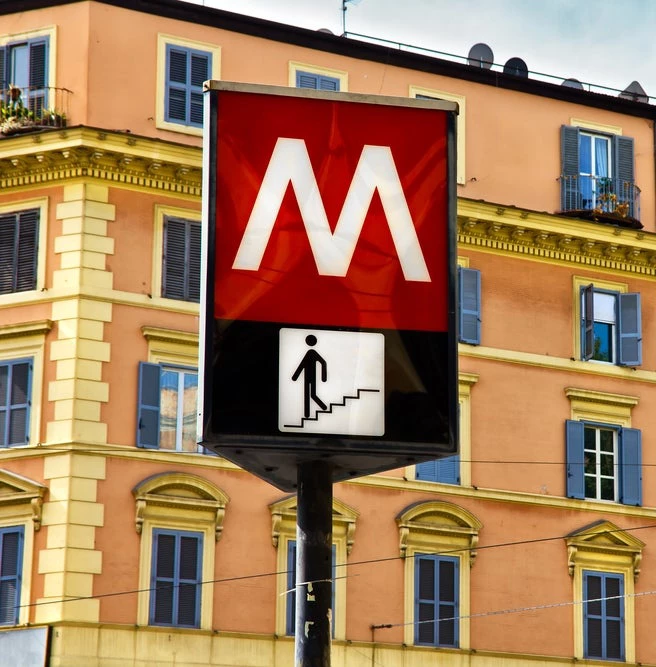
As more and more people live and work in a neighborhood with a limited land area, it becomes increasingly challenging to drive around without encountering congestion or to find a parking space easily. In this situation, public transit and non-motorized transport (NMT) become attractive alternatives for people who otherwise are reluctant to give up the comfort and flexibility of driving.
Conversely, as street blocks get bigger, people may find it takes too long to access public transit stations, which discourages the use of public transport facilities.
As straightforward as the logic may sound, the nature and magnitude of such influence are yet to be evaluated with solid empirical evidence. To take a closer look at the linkages between land use and travel behavior, I decided to study the case of Boston in the United States. I chose Boston because it boasts an effective public transit system, and was one of the first American cities to embrace transit-oriented development (TOD), an urban planning approach that promotes compact and mixed use development around public transit facilities. By analyzing data on travel modal share, car ownership, household characteristics and land use patterns within the half-mile radius around 298 transit stations in Boston, I have the following observations:
1. As density increases, more people choose to move around the city by public transit and non-motorized transport (NMT) and fewer cars are kept in each household. On average, doubling the residential density is associated with a 19.7% increase in the modal share of public transport and NMT combined and a decrease of 0.4 vehicles per household (Figure 1).
Figure 1: The relationship between car-dependency and residential density
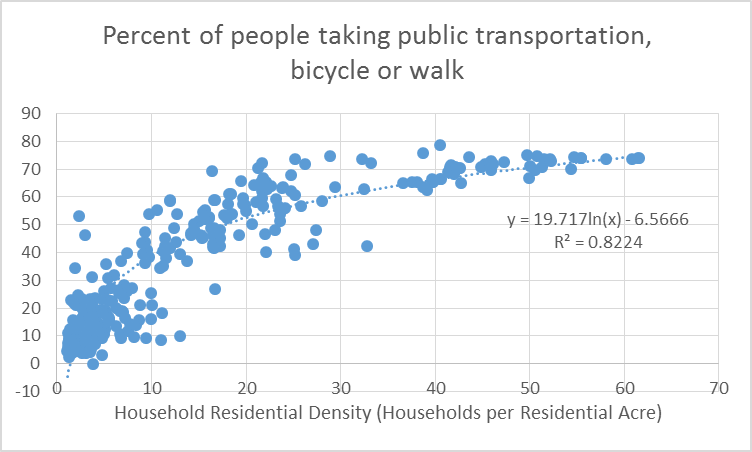
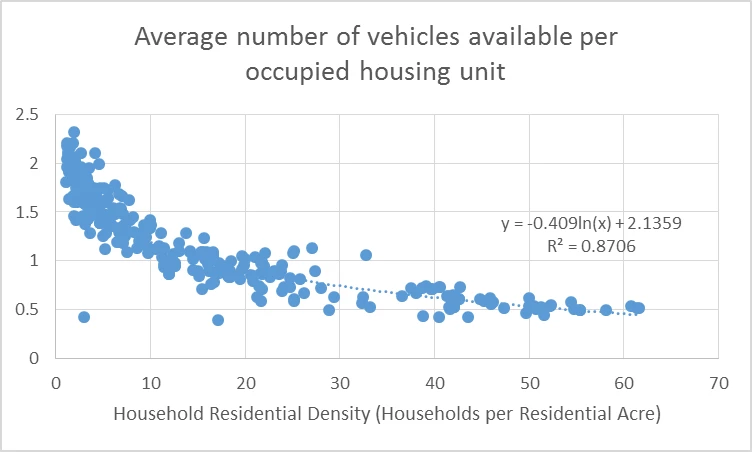
Data source: TOD database. http://toddata.cnt.org/db_tool.php
2. Land use configuration also has strong impacts on people’s travel behavior. Taking block size as an example: with larger street blocks, fewer people use public transit and NMT while each household tends to own more cars. Specifically, doubling the block size is associated with a 22.1% decrease in the modal share of public transport and NMT combined as well as an increase of 0.5 vehicles per household (Figure 2).
Figure 2: The relationship between car-dependency and block size

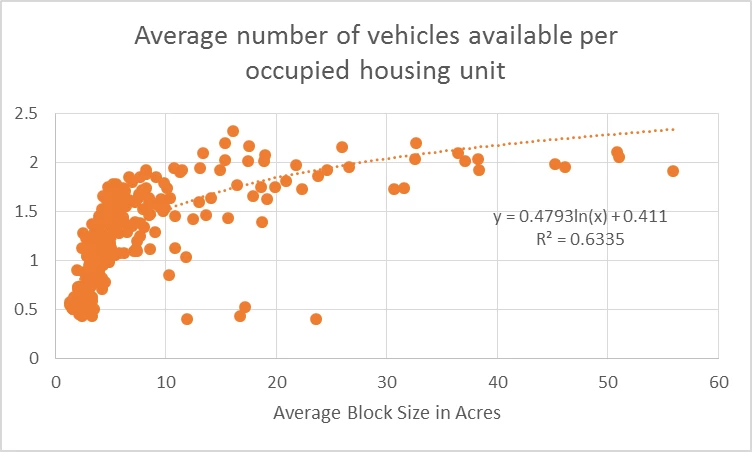
Data source: TOD database. http://toddata.cnt.org/db_tool.php
The findings are in line with the TOD principles that have been developed and practiced widely across countries, that is, compact and dense land development with smaller street blocks would help cities shift towards a life-style that is less dependent on private cars. The positive implications on environmental quality, climate change mitigation and human physical wellbeing have been well-documented.
Cities in developing countries have been learning from Boston and other advanced examples. They are eager to integrate TOD in their ongoing urbanization process as a measure to curb sprawl and remediate congestion. In China where I work, the Ministry of Housing and Urban Rural Construction recently issued a national guideline for urban planning and design in the proximity of metro stations that follows the key principles of TOD (available here in Chinese).
The World Bank has been actively involved in China’s effort to build livable cities through TOD. It has been financing metro constructions with TOD pilots in the urban centers of Nanchang and Tianjin. Meanwhile, under the Sustainable Cities Integrated Approach Pilot program funded by Global Environmental Facility (GEF), the Bank is working with seven cities across China to develop tailored TOD strategies at city, corridor, and station levels, and is also developing a TOD toolkit to facilitate the design, construction, financing and evaluation of TOD pilot projects.
With the right policies and investments, TOD has the potential to help Chinese cities create a better living environment for their residents, and to promote low-carbon mobility decoupled from motorization.

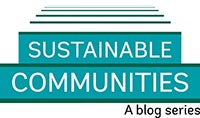

Join the Conversation